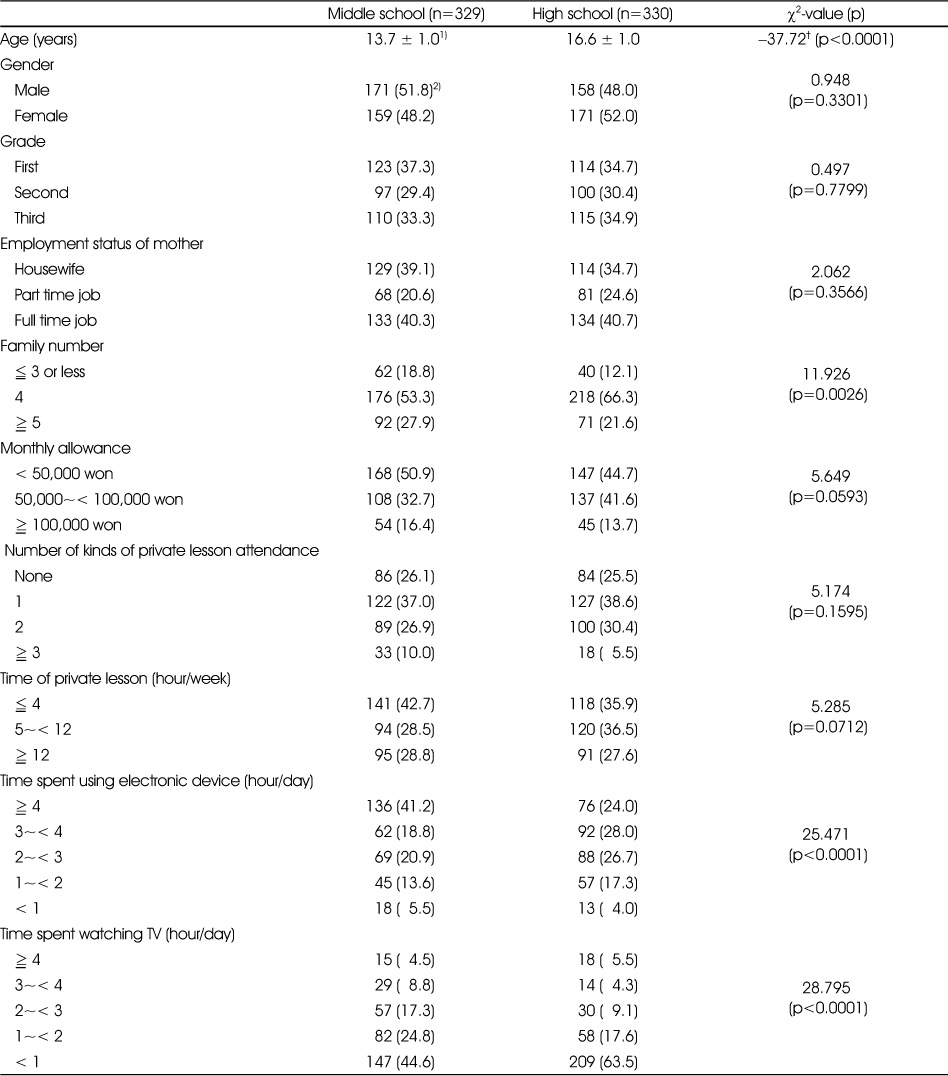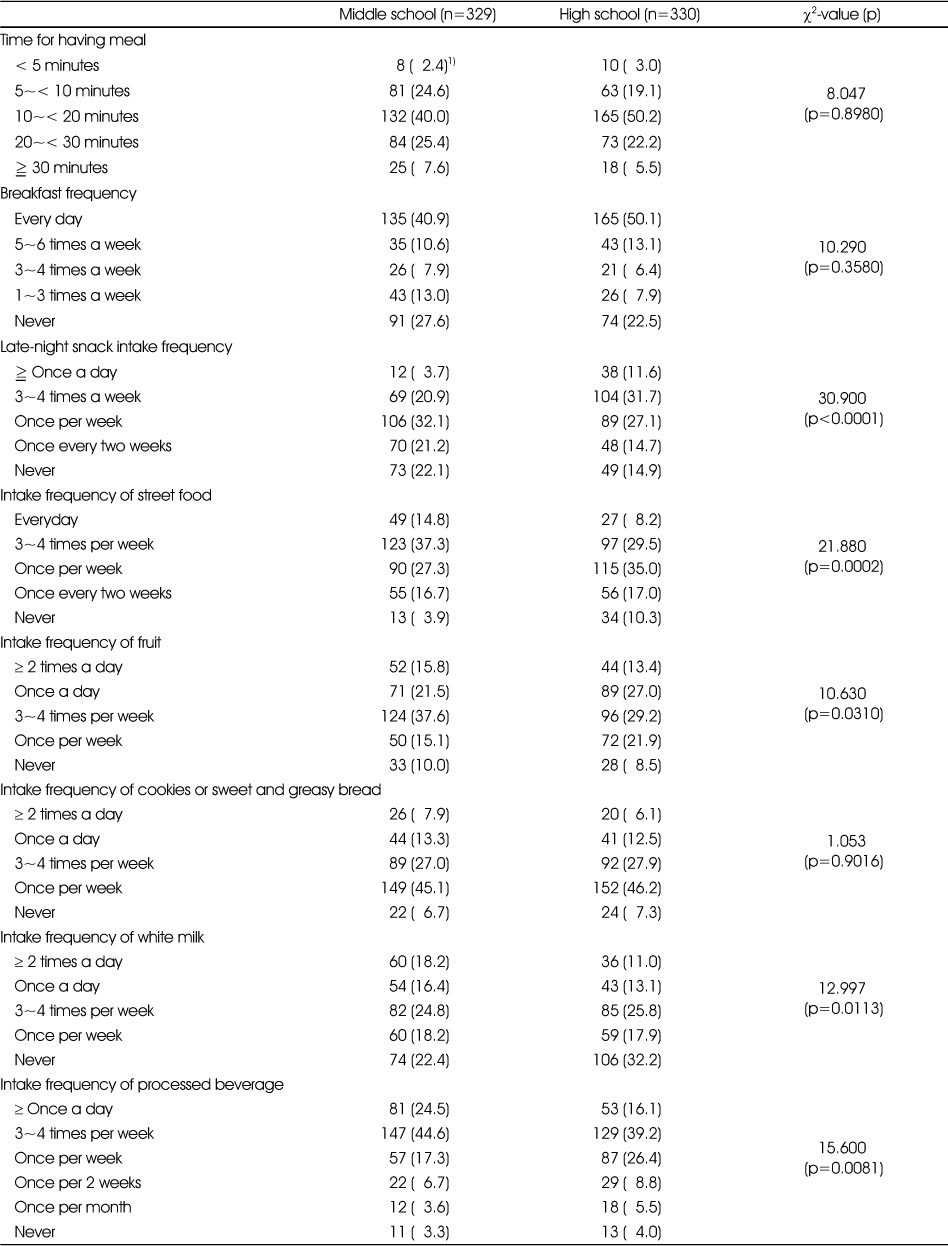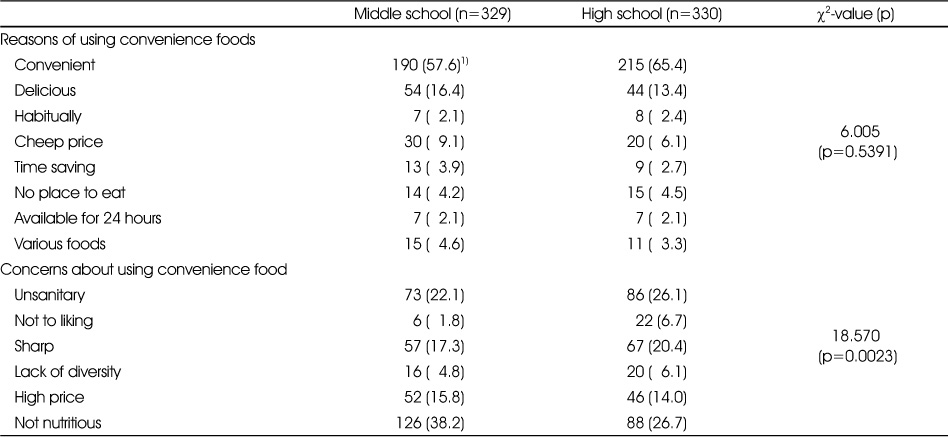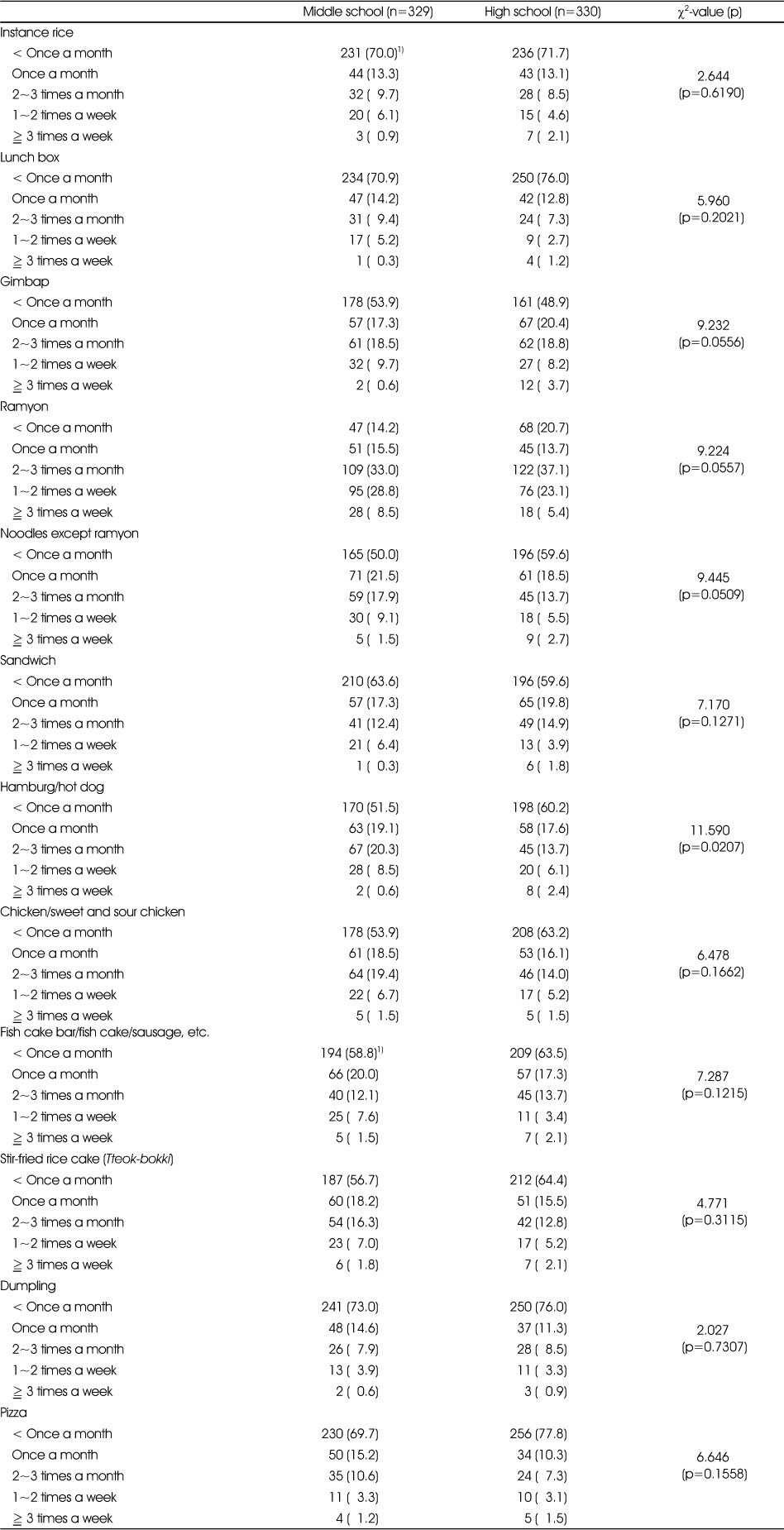Articles
- Page Path
- HOME > Korean J Community Nutr > Volume 24(2); 2019 > Article
-
Research Article
- Study on Middle and High School Students' Use of Convenience Foods at Convenience Stores in Incheon
-
Seul-Ki Lee
 , Mi-Kyeong Choi
, Mi-Kyeong Choi , Mi-Hyun Kim
, Mi-Hyun Kim
-
Korean Journal of Community Nutrition 2019;24(2):137-151.
DOI: https://doi.org/10.5720/kjcn.2019.24.2.137
Published online: April 30, 2019
1Major in Nutrition Education, Graduate School of Education, Kongju National University, Yesan 32439, Korea, Graduate student.
2Division of Food Science, Kongju National University, Yesan 32439, Korea, Professor.
- Corresponding author: Mi-Hyun Kim. Division of Food Science, Kongju National University, Yesan 32439, Korea. Tel: (041) 330-1463, Fax: (041) 330-1469, mhkim1129@kongju.ac.kr
Copyright © 2019 The Korean Society of Community Nutrition
This is an Open-Access article distributed under the terms of the Creative Commons Attribution Non-Commercial License (http://creativecommons.org/licenses/by-nc/3.0/) which permits unrestricted non-commercial use, distribution, and reproduction in any medium, provided the original work is properly cited.
- 2,454 Views
- 20 Download
- 7 Crossref
Figure & Data
REFERENCES
Citations

- Gen Z consumers’ expectations for smart convenience stores in the USA, South Korea, and Japan
Summer Dahyang Jung, Sahej Claire, Sohyeong Kim
Young Consumers.2024; 25(3): 400. CrossRef - Study on the Eating Out Behavior and the Status of Meal Delivery and Take-Out Consumption according to the Food-related Lifestyles of Adolescents : Using the Consumption Behavior Survey for Food in 2020
Eun Jung Lee, Hyeon Min Yang, Yeong Ju Lee, Sun A Choi, Jeong Ok Rho
Journal of the East Asian Society of Dietary Life.2024; 34(4): 284. CrossRef - The frequency of convenience food consumption and attitude of sodium and sugar reduction among middle and high school students in Seoul: a descriptive study
Seoyeon Park, Yeonhee Shin, Seoyeon Lee, Heejung Park
Korean Journal of Community Nutrition.2023; 28(4): 269. CrossRef - Determination of the migration of plastic additives and non-intentionally added substances into food simulants and the assessment of health risks from convenience food packaging
Eun Chul Pack, Kyung Youn Lee, Jin Seop Jung, Dae Yong Jang, Hyung Soo Kim, Ye Ji Koo, Ho Geon Lee, Young Soon Kim, Kyung Min Lim, Seung Ha Lee, Dal Woong Choi
Food Packaging and Shelf Life.2021; 30: 100736. CrossRef - Association between breakfast and lifestyle, interest in beauty care, and attitude toward breakfast in high school girls in Incheon
Seolmi Lee, Mi-Hyun Kim
Journal of Nutrition and Health.2020; 53(3): 288. CrossRef - Convenience Store Use and the Health of Urban Adolescents in Seoul, South Korea
Nan-He Yoon, Changwoo Shon
International Journal of Environmental Research and Public Health.2020; 17(18): 6486. CrossRef - Association between frequency of convenience foods use at convenience stores and dietary quality among high school students in Incheon
Eun-Mi Kim, Mi-Kyeong Choi, Mi-Hyun Kim
Journal of Nutrition and Health.2019; 52(4): 383. CrossRef
General characteristics of the middle and highschool students
1) Mean ± SD
2) n (%)
†: t-value
Dietary habits of the middle and highschool students
1) n (%)
Status of using convenience food at convenience stores of the middle and highschool students
1) n (%)
Status of checking nutrition labeling when using convenience food in convenience stores of the middle and highschool students
1) n (%)
Reasons and concerns on using convenience food at convenience stores of the middle and highschool students
1) n (%)
Intake frequency for each type of convenience food in convenience stores of the middle and highschool students
1) n (%)
Correlation between frequency of consuming convenience food from convenience stores and lifestyle factors
1) *: p<0.05, ***: p<0.001
1) Mean ± SD 2) n (%) †: t-value
1) n (%)
1) n (%)
1) n (%)
1) n (%)
1) n (%)
1) *: p<0.05, ***: p<0.001

 KSCN
KSCN







 Cite
Cite


